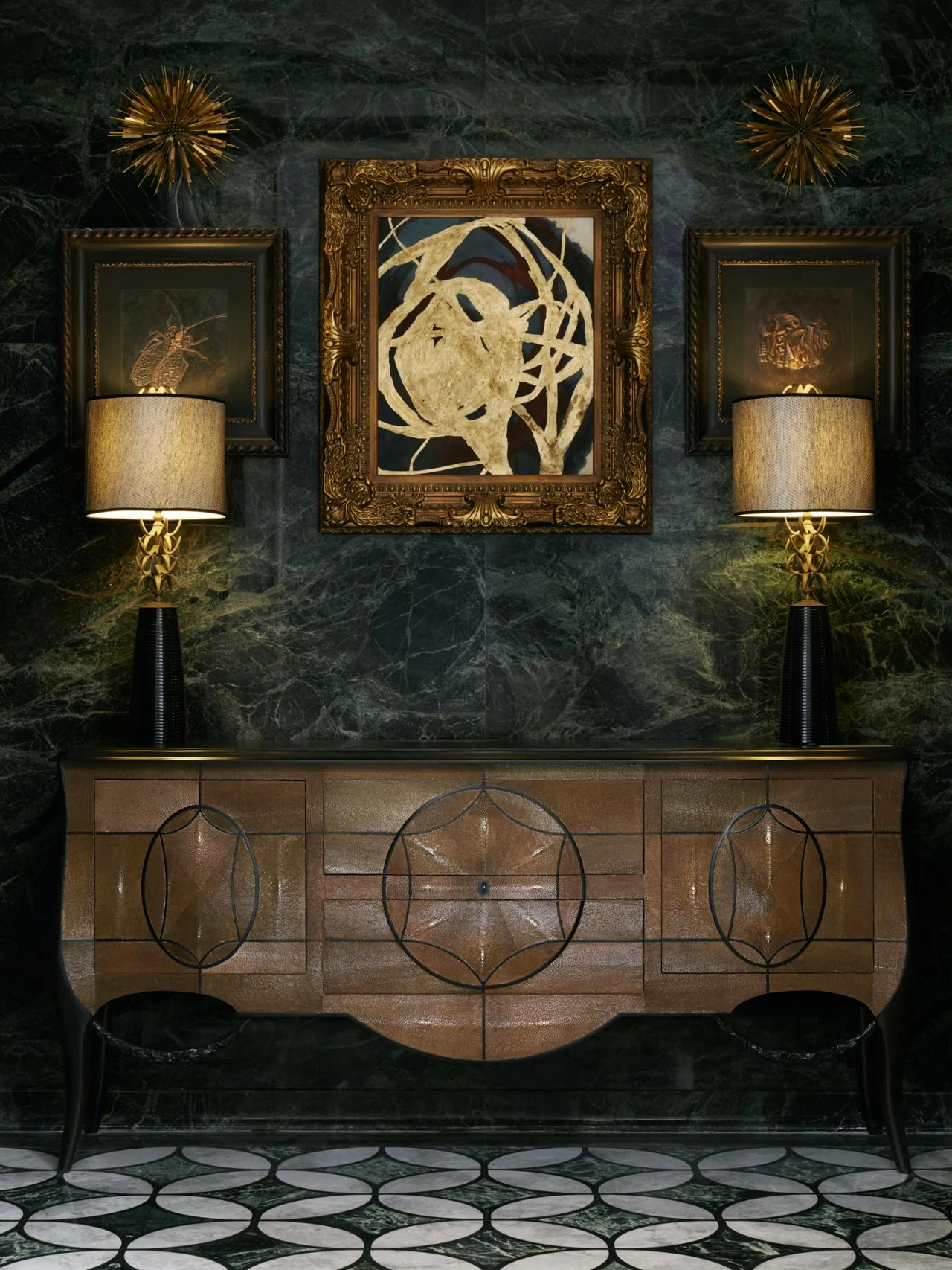Meroma Restaurant Oficina de Práctica Arquitectónica
2018-04-06 17:00
架构师提供的文本描述。位于罗马北部科隆尼亚的中心,这家餐厅沉浸在墨西哥城最受欢迎的社区之一。会场是一座奇特的80年代的房子,以其椭圆形的窗户网格外墙和两棵高天际的老树而突出,这两棵树只允许从街道上瞥见这座建筑。Meroma是一个160平方米的空间,分为两层和三个主要空间,每个非常不同,在同一地方创造了独特的氛围。对老房子的激进干预是由OPA负责的。OPA是由罗莎莉亚·尤斯特(Rosalía Yuste)和迭戈·马尼翁(Diego Maón)领导的建筑办公室,他们以厨师们对即将到来的餐厅的需求和理念为指导,制定了一项设计方案。
Text description provided by the architects. Located in the heart of Colonia Roma Norte, the restaurant is immersed in one of the most popular neighborhoods in Mexico City. The venue is a peculiar 1980’s house that stands out by its referential oval-window grid façade and a pair of sky-high old trees that allow just a glimpse of the building from the street. Meroma is a 160 sqm space divided into two stories and three main spaces, each one very different from the other, creating distinct atmospheres within the same place. The radical intervention to the old house was in charge of OPA, the architecture office led by Rosalía Yuste and Diego Mañón, who worked on a design proposal guided by the needs and concept lines that the chefs had in mind for their upcoming restaurant.
底层是一个与人行道融为一体的空间,它承载着这个地方最具戏剧性的元素:一个巨大的整体混凝土水磨石坝。这个空间的目的是邀请每一个行人,因为没有限制的街道。它还为餐厅提供了一个过渡空间,供客人进入餐厅。酒吧的座位空间是由一个木板构成的,座位从那里出现,邀请客人在等桌子的时候喝一杯,或者坐下来享用咖啡师提供的标志性鸡尾酒。用于这一空间的三种材料创造了一个平衡的对比。在主楼层是餐厅,这是一个动态的设置,以容纳35人。
The ground floor is a single space that merges with the sidewalk, and it hosts the most dramatic element of the place: a huge monolithic concrete terrazzo bar. This space aims to invite every passerby by having no limits to the street. It also provides the restaurant with a transitional space for the guests to enter the dining hall. The seating space of the bar is formed by a wooden panel from where seats emerge, inviting guests to have a drink while waiting for a table or to sit and enjoy one of the signature cocktails offered by the barista. The three materials used for this space create a balanced contrast. On the main floor is the dining hall which was designed in a dynamic setup in order to accommodate 35people.
这种紧凑的空间保持了最少的构造元素和照明细节。在这里,主要人物是来自高圆顶的自然光线,它被外面的树木的叶子覆盖。结果是落在落叶中的玻璃天花板。家具布置得既周到又高效,为客人和服务员创造了流通的流通。除了餐厅外,露台也是餐厅唯一的露天空间,它允许多达16名幸运的客人坐在外面的空间里,周围有绿色的树叶从餐厅旁边悬挂下来。所述平台是可根据主机所需的天气和使用而适配的柔性空间。
This compact space holds a minimum of constructive elements and lighting details. Here, the main character is the natural light from the high dome which is covered with the foliage of the trees outside. The result is a glass ceiling draped in fallen leaves. The furniture is arranged thoughtfully and efficiently to create a flowing circulation for the guests and the waiters. Beyond the dining hall, the terrace is the only open-air space of the restaurant, it allows up to 16 fortunate guests to sit in an exterior space surrounded by green leaves hanging from the treetops alongside the dining tables. The terrace is a flexible space that can be adapted according to the weather and uses required by the hosts.
每个空间都有根据不同环境设计的家具,由设计工作室Comitéde Proyectos监督。材料和彩色托盘的设计,特别是为建筑元素,以及指定的家具。选择的颜色是粉红、绿色和骨色的水磨石;展位是用薄荷色布和可重复使用的木结构制成的。主大厅的桌子有一个圆顶盖,加强了木材的自然形状,以创造几何形状时,聚集在一起。
Each space has furniture designed according to the different environments, which was overseen by the design studio Comité de Proyectos. The materials and color pallet were designed especially for the architectural elements as well as for the designated furniture. The selected colors are pink, green and bone colored terrazzo; the booths were made out of a mint colored cloth with a reused wooden structure. The main hall tables have a huanacaxtle top cover that enhances the natural shapes of the wood to create geometric shapes when gathered together.
这些椅子是专为餐厅设计的,是用白橡木做的,垫子则是浅灰色的。椅子的后部设计是为了保持餐厅的自然流通,使餐厅能够舒适地为客人提供最大容量的服务。外面的桌面是由绿色的玻璃制成的,那里是植被反射的地方。另外的材料,如墙壁上的火山石和地板上重复使用的木材,创造了一个独特的环境,从内部空间。
The chairs were designed particularly for the restaurant, are fabricated from white oak wood, and light grey fabric for the cushions. The round back of the chairs was designed to preserve the natural circulation of the restaurant allowing the dining hall to comfortably serve the maximum capacity of guests. The exterior table tops are made from the green glass where the vegetation reflects. Additional materials such as volcanic stone on the walls and reused wood on the floor create a distinctive setting from the interior spaces.
整个项目的建筑材料选择,如水磨石,预制混凝土,以及建筑元素和家具的木材,这些材料是从厨师和他们在设计中寻找的食物和氛围的概念过程中挑选出来的。其目的是创建一个由材料和颜色组成的单一调和托盘,使每个空间都有自己的氛围,并在限制使用装饰物的同时给餐厅带来独特的特征。
The constructive materials selection for the entire project such as terrazzo, and pre-casted concrete, and wood for the architectural elements and furniture, where selected from a close conceptual process undertaken with the chefs and their ideas on the food and ambiance they looked for in their design. The aim was to create a single harmonic pallet of materials and colors that would bring each space an atmosphere of its own and would give a unique character to the restaurant while limiting the use of decorative pieces.
Architects Oficina de Práctica Arquitectónica
Location Roma, 06760 Mexico City, CDMX, Mexico
Architects in Charge Rosalía Yuste, Diego Mañón
Design Team Berenice Solis y David Ignorosa
 举报
举报
别默默的看了,快登录帮我评论一下吧!:)
注册
登录
更多评论
相关文章
-

描边风设计中,最容易犯的8种问题分析
2018年走过了四分之一,LOGO设计趋势也清晰了LOGO设计
-

描边风设计中,最容易犯的8种问题分析
2018年走过了四分之一,LOGO设计趋势也清晰了LOGO设计
-

描边风设计中,最容易犯的8种问题分析
2018年走过了四分之一,LOGO设计趋势也清晰了LOGO设计
















































































